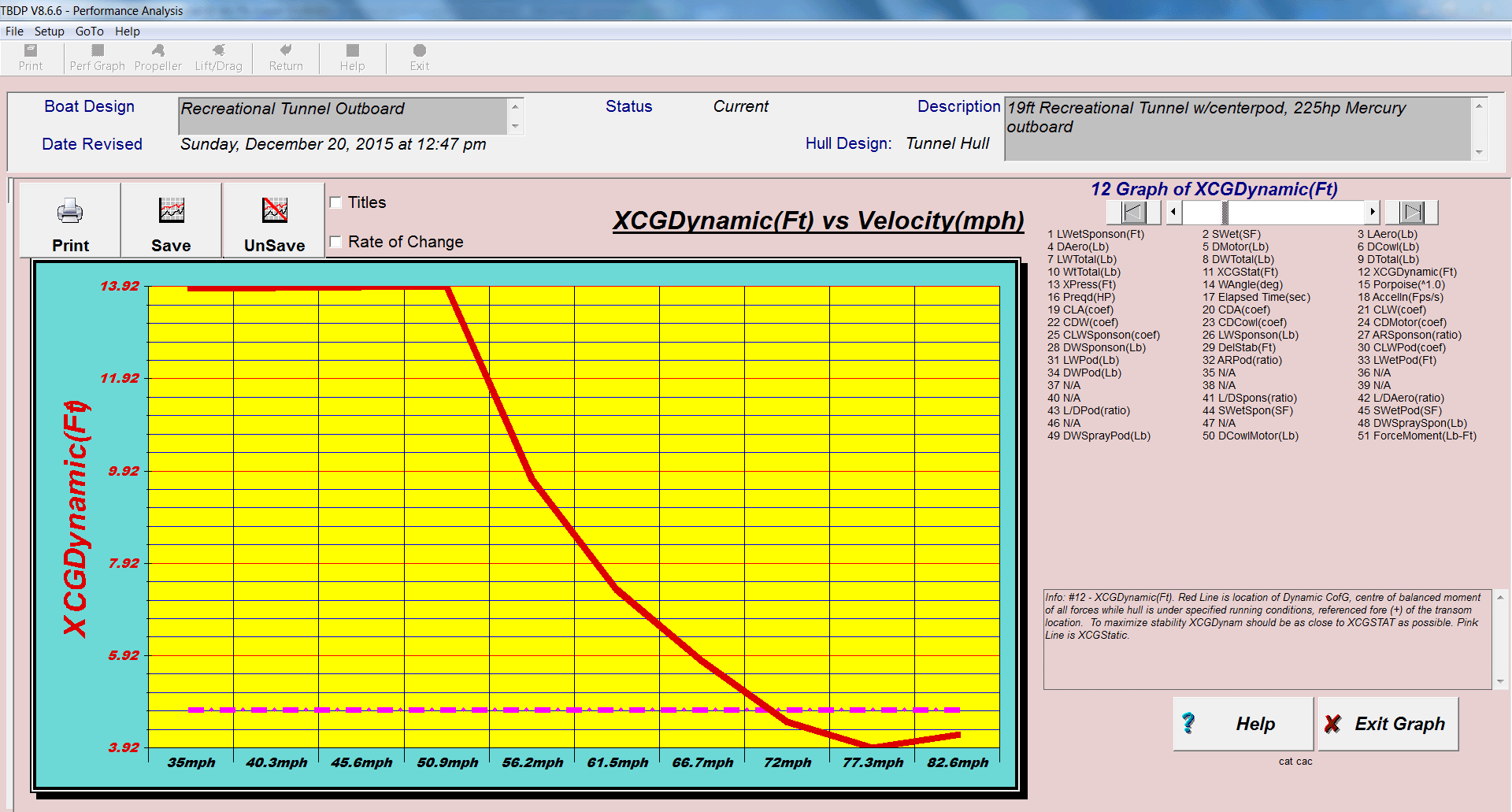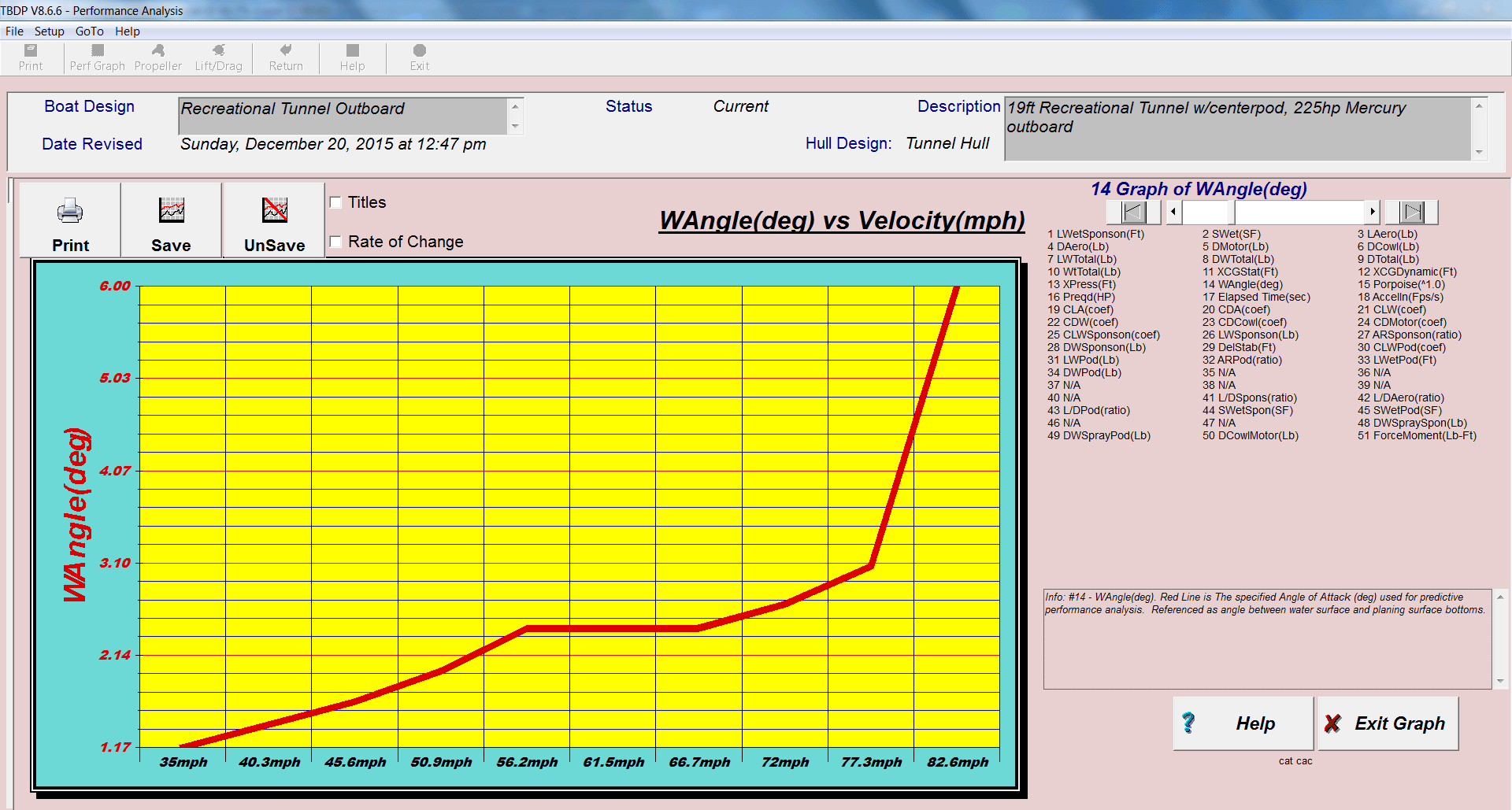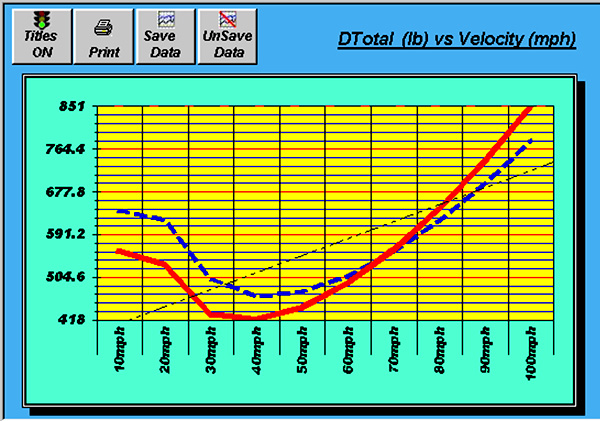|
|
|
 |
Advanced Aerodynamics and Hydrodynamics for Powerboats |
| Performance Boat design and setup secrets for Recreational tunnels, Offshore Cats, Racing tunnels, Fishing/Utility hulls, Vee and Vee-Pad Hulls, Bass Boats | |
| Home New About Us Free Articles Technical Articles TBPNews Archives FREE Downloads Research Contact Us | |
|
Testimonials
Reviews
Join TBPNews
Advertise
Search
Buy Now
|
|
|
|
|
|
About TBDP |
Features |
How it Works |
Design Inputs | Perf
Outputs | Screens |
Reports | VBDP | Testimonials
|
Our Methods |
Reviews | Updates |
Videos | Order
|
||
| TBDP©/VBDP© 'Trim Angles with Full Power (Angle Analysis)' | ||
| Get complete article by email request: | Share: | |
| BREAKTHROUGH! | ||||
|
'Angle Optimization Analysis'
by AR's unique analysis and TBDP©/VBDP© software. |
||||
|
TBDP©/VBDP© software's 'Optimize=Angle' analysis will use maximum power to find minimum trim angle (WAngle) to satisfy a solution at each velocity step through the operating range.
When performance OPTIMIZATION is set for "Angle Optimization", your design will be evaluated through a range of specified Velocities. The minimum Angle of Attack (of planing surfaces) based on the specified (Maximum) Power available will be determined for each velocity. TBDP©/VBDP© Performance Report for “Optimize = Angle” generates the trim angle (WAngle) required for the specified design at MAXIMUM Available Power - so Power will be approximately “maximum available” throughout the velocity range, and the WAngle required to meet this condition (velocity and power) is calculated. All other performance indicator values are resultant of these settings. Note: this option provides the most comprehensive performance analysis, and the most detailed Performance Report. This setting is most often utilized to accurately evaluate detailed performance of hull and setup. |
||||
|
Figure
2- TBDP©/VBDP© graphic output |
||||
Trends in the predicted performance indicators can be carefully studied to determine whether the performance is satisfactory or whether the design can benefit from further refinement. For example (see figures 2, 3), a good indication of the behaviour of a hull design in it's upper speed range, is often seen in the change in location of the "Dynamic Center of Forces" (XCFDynamic) or a change in the required "Angle of Attack" (WAngle). If either of these two performance indicators is shown to change more rapidly at higher velocities than they did at lower ones, then the hull design is likely becoming unstable and you should conclude that the practical maximum controllable velocity is being reached or exceeded. [Such changes in performance indicators are easily observed in the Performance Graphs and are specifically highlighted in the unique Performance Report]. |
||||
|
'Optimize=Angle' analysis advantages
This
performance optimization analysis method is the best method to
observe performance at maximum power utilization, particularly
when examining performance at top speed range. The
analysis shows all of the performance characteristics throughout
the velocity range, while considering the trim angle (WAngle)
that will be required with application of full power. |
||||
|
Figure 4- TBDP©/VBDP© graphic output Design 'Compare
Feature' shows
each performance indicator value comparing 2 or 3
alternative designs. |
||||
|
Some observations
'Optimize=Angle' The ability to apply full (Max) power usually means...
Performance Analysis/Optimization Options - TBDP/VBDP can employ 4 different Optimizing methods of performance analysis, each highlighting different performance scenerios and features. Get full performance data,data points for chosen analysis method:
1)
Max Velocity or Test Velocity, Each optimizing method presents comprehensive performance results measures through full operating velocity range, detailed hull performance characteristics. |
||||
|
[more about AR's research more about AR's publications and technical articles/papers] |
||||




